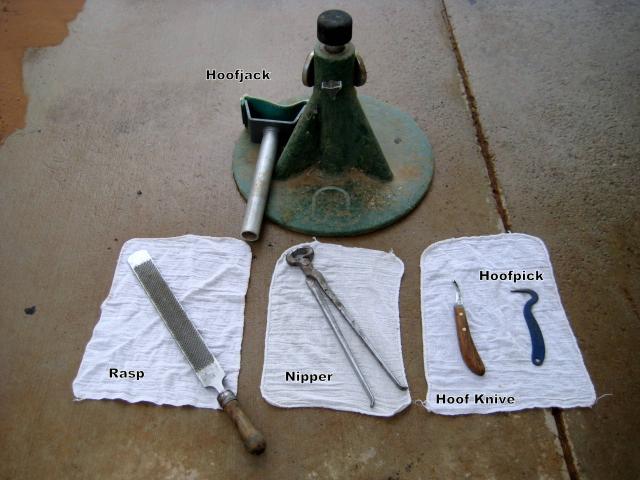Protective hoof boots are replacing traditional horse shoes in ever increasing numbers, and many horse owners are interested in trimming and maintaining their horses’ hooves without the help of hoof care professionals.

The horse owner interested in trimming their own horses’ hooves must first acquire the necessary knowledge to safely and correctly trim hooves. Then they need the correct tools to get started.
Out of all of the available tools, there are five tools that we consider essential for successful hoof trimming: a hoof jack, rasp, nippers, hoof knife, and hoof pick.
These five are a must. Without having all five available, we do not recommend trimming your horses’ hooves. Similar to many areas of the tool market, you get what you pay for. Do not buy any cheap tools. They will make life harder and sooner or later you will throw them out to get something that works.
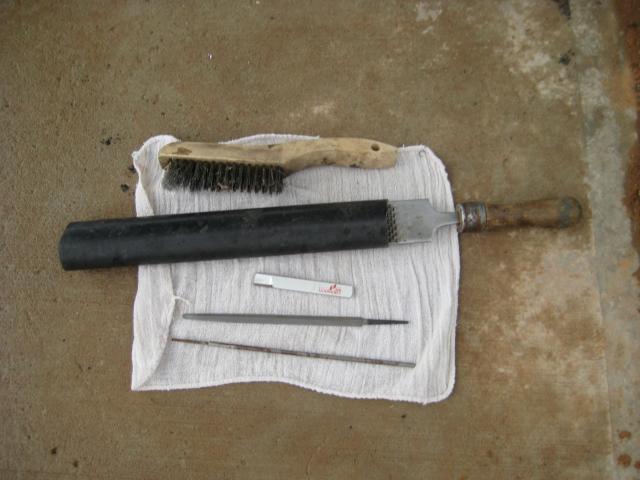
Good tools require an initial investment, but they are necessary to trim your horses’ hooves well and effectively. If you take care of them, you will increase their life expectancy and usefulness.
Keep your hoof knife sharpened. Chainsaw sharpening files are especially popular, and work well to sharpen the curve of the hoof knife.
A new rasp should last you for about 20 horses (about 80 to 100 hooves). Rasps should not be oiled. Oil will compromise their ability to cut and make them collect dirt. There are services available to sharpen your rasps, but try to mail several rasps together to save on shipping costs. Your rasp should always be stored in a piece of cloth or a protective sleeve.
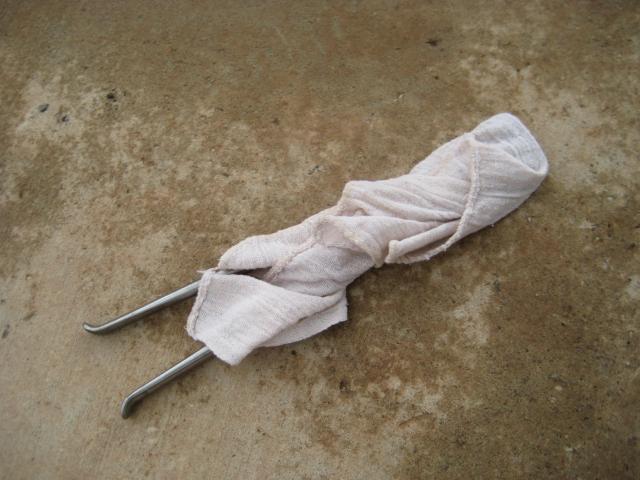
Good nippers can last you many years as long as you treat them with great care and oil them to keep them protected from moisture. Even when you take good care of your nippers, they will dull eventually. You can send them in to have them refurbished. Do not attempt to sharpen nippers yourself. It takes great skill and knowledge to sharpen nippers. Always wrap your nippers in a sleeve or protective cloth.
Here are some steps to follow while you’re trimming a hoof that will further extend the life of your tools:
1. Always clean the hoof before rasping. The hoof below is in no shape to put your expensive rasp to work.
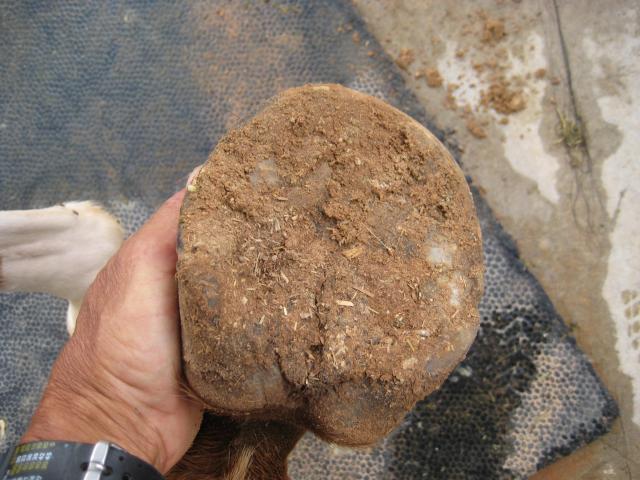
First use your hoof pick to clean as much as possible, then the wire brush to remove any sand and grit.
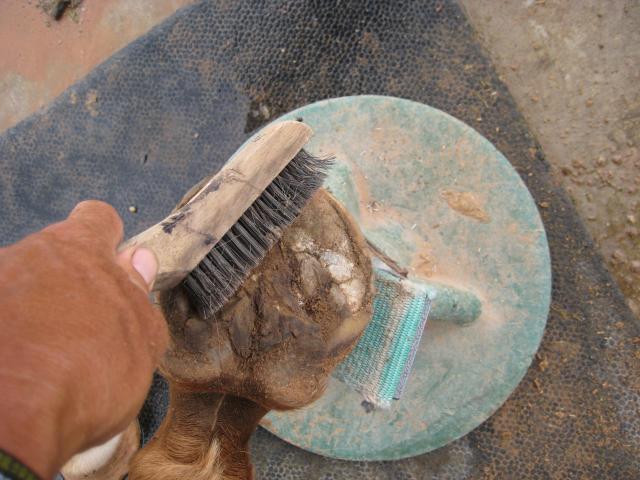
Now the hoof is ready for the nippers or the rasp.

2. Use your nippers more than your rasp. This is easier and will save time.
3. Use the whole rasp. Too many people have a tendency of making short strokes. Make long and smooth strokes.
4. Use the rasp in a singe direction; no back and forth scrubbing. Look at the rasp so you understand the way it cuts. The rasp pattern is designed to cut in one direction.
5.When switching from using the nippers to the rasp, don’t toss your tools around on the ground. Place them carefully on a soft towel or board. The magnets on your hoof jack will also hold your tools while you’re not using them.
6. After finishing your trim, brush your rasp clean with a non-metal brush. Wire brushes will dull the rasp.
7. Store all of your tools in a dry environment. Rust will shorten their life.
8. Have all of your tools protected when in transport. Don’t let them bounce around in a box.
Let us know what tips you’ve found useful when it comes to taking care of your trimming tools!


